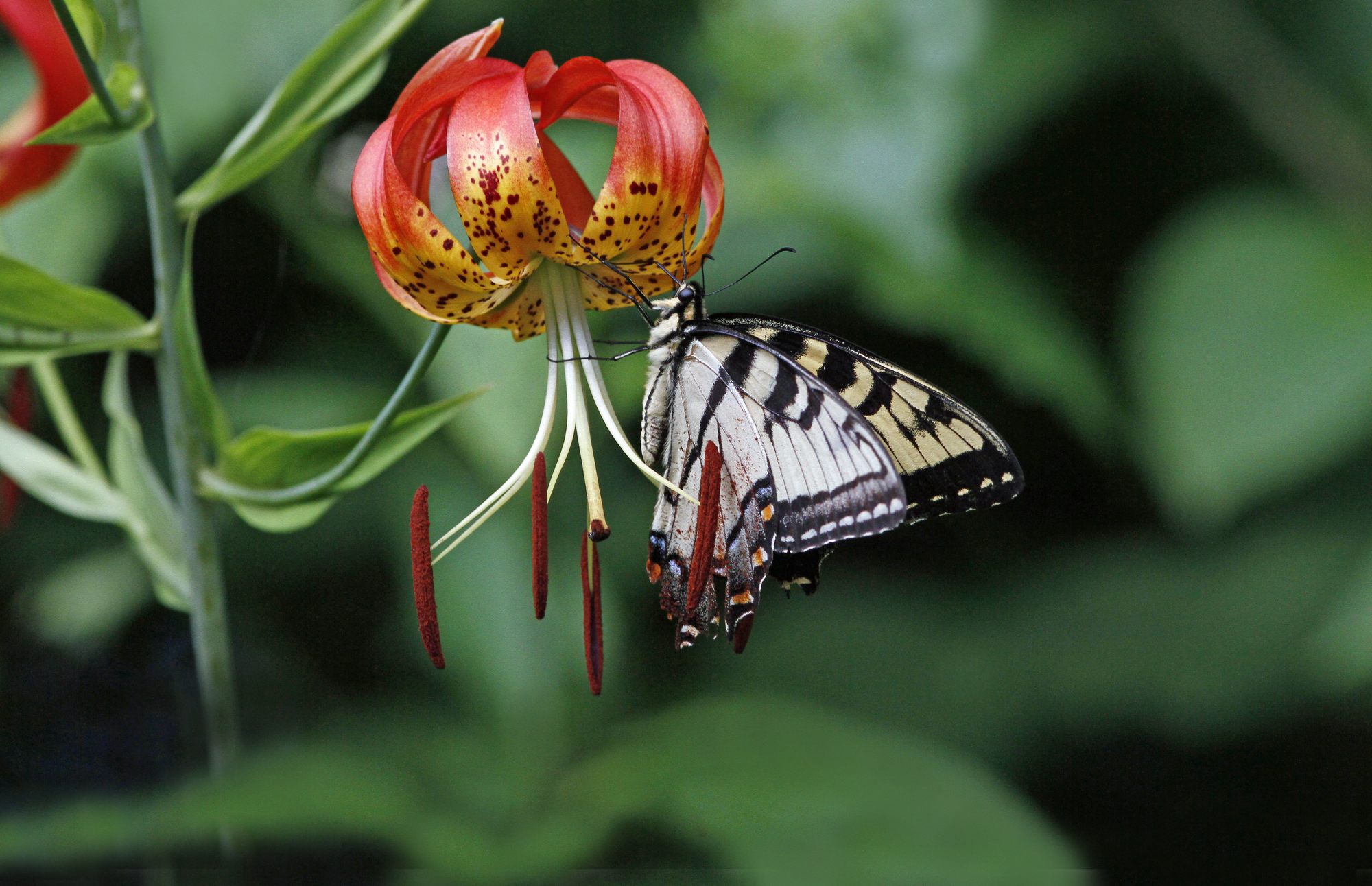
This fall’s Monarch Migration at Cape May has been magical. Each cold front has brought another wave.
Flights on September 23 and 24, 2012,
were steady all day long with Monarchs floating down the beachfront from dawn till dusk. Each of those evenings, by late afternoon, Monarchs began gathering at roost sites in Red Cedars near blooming Groundsel-tree in dunes along the beachfront and in deciduous trees near blooming English Ivy along the rural streets of Cape May Point.

Still finding Monarch eggs and caterpillars
And through it all we’re still finding Monarch caterpillars on milkweed, so please, please, please, DO NOT cut down the milkweed in your garden. Despite looking “done” it’s still helping the Monarch population swell.
Monarch Roost, 7:00 to 8:30 a.m.
Yesterday morning (September 25), at first light, I visited sites where Monarchs had roosted through the night. As the sun warmed them and they were able to fly, they dropped down onto blooming Groundsel-tree and nectared heartily. It was magical – no other way to describe it!
Even though I’ve witnessed Monarch evening roosts dozens of times over the many falls we’ve lived in Cape May County, I can never get enough of them. Red Cedar trees sometimes adorned with a thousand plus Monarchs, wings closed and looking like dead leaves until a newcomer flies by and they all open their wings as if to say, “Join us, this is a safe place to rest.”
Winds switched the morning of September 25, coming from the southwest – a headwind for a migrating Monarch (winds that do not help them continue their migration south). With this being the case, many Monarchs could not continue their migration, but are still around Cape May.
Next coldfront: Thursday, September 27
Another cold front is predicted for Thursday (September 27), winds that just might bring another wave of southbound Monarchs.

If you’ve never witnessed the magic of the Monarch Migration at Cape May, this is the fall to do it. Not every autumn is accented with magical Monarch flights, but this fall is proving to be just such a fall.
Don’t contact me to learn if there’s to be a Monarch flight
I may be out of town and you might miss one.
Instead, pay close attention to the weather
- If it turns cold and you’ve got to track down flannel pajamas
- and pull up the comforter at night
- get to Cape May the next day!
- That cold weather is a cold front – with north and northwest winds – winds that carry Monarchs and other migrants (Red Bats, dragonflies, warblers, flycatchers, thrushes, raptors, and so much more) out to the coast and south to land’s end at Cape May Point!
- If the weather is warm and Indian summer-like, well . . . the winds are probably from the south and pushing migrants away from Cape May. If that is the case, well, don’t bother coming. But if it is cold and blustery, get here quickly.
Monitor the 3 websites I’ve listed below and read the posts
On these posts, folks often predict when they feel the next good Monarch flight might happen. Monarchs often gather at roosts in the dunes and around Cape May Point from about 3 p.m. on at the end of a good flight. If there’s been a cold front any time from mid-September through October, Monarchs may pour to the tip, Cape May Point.
- Read week-by-week accounts about this fall’s Cape May Monarch migration at the “Monarch Monitoring Project” blog.
- Learn the history of the “Monarch Monitoring Project,” a research and education project of NJ Audubon’s Cape May Bird Observatory.
- Also check the Cape May Bird Observatory’s “View From the Cape: Recent Sightings” blog.
- Attend some of the Cape May Bird Observatory’s “Monarch Tagging Demos.” The folks who help with the Monarch Tagging Demos are “in the know” about roosting Monarchs. Talk with them and express your keen interest, and they’ll gladly share how you can best keep your pulse on the Monarch migration and not miss a good gathering.
I’ll be sharing my “Milkweeds & Monarchs” program on Monday evening, October 1, 2012, at the County Library, 30 Mechanic Street, Cape May Court House, NJ. Join me! It’s FREE.
Good luck with the miracle of migrating Monarchs!
See you in the field.

 We were away in South Carolina running two butterfly counts (in their 20th year – a whole other butterfly-rich story to tell). Upon our return on August 29th, we found our garden swimming in Painted Ladies. We tallied 21, far more than we’d ever seen in our garden before.
We were away in South Carolina running two butterfly counts (in their 20th year – a whole other butterfly-rich story to tell). Upon our return on August 29th, we found our garden swimming in Painted Ladies. We tallied 21, far more than we’d ever seen in our garden before.

 Much to our amazement, numbers steadily rose each day: 35 on August 30, 54 on August 31, and 70 on September 1. Numbers held steady at 70 for a few days, then shot up to 106 on September 5. Clouds of butterflies lifted, scattered, and settled back on blooming Sedum and other plants as we slowly and reverently walked through our magic garden.
Much to our amazement, numbers steadily rose each day: 35 on August 30, 54 on August 31, and 70 on September 1. Numbers held steady at 70 for a few days, then shot up to 106 on September 5. Clouds of butterflies lifted, scattered, and settled back on blooming Sedum and other plants as we slowly and reverently walked through our magic garden.
